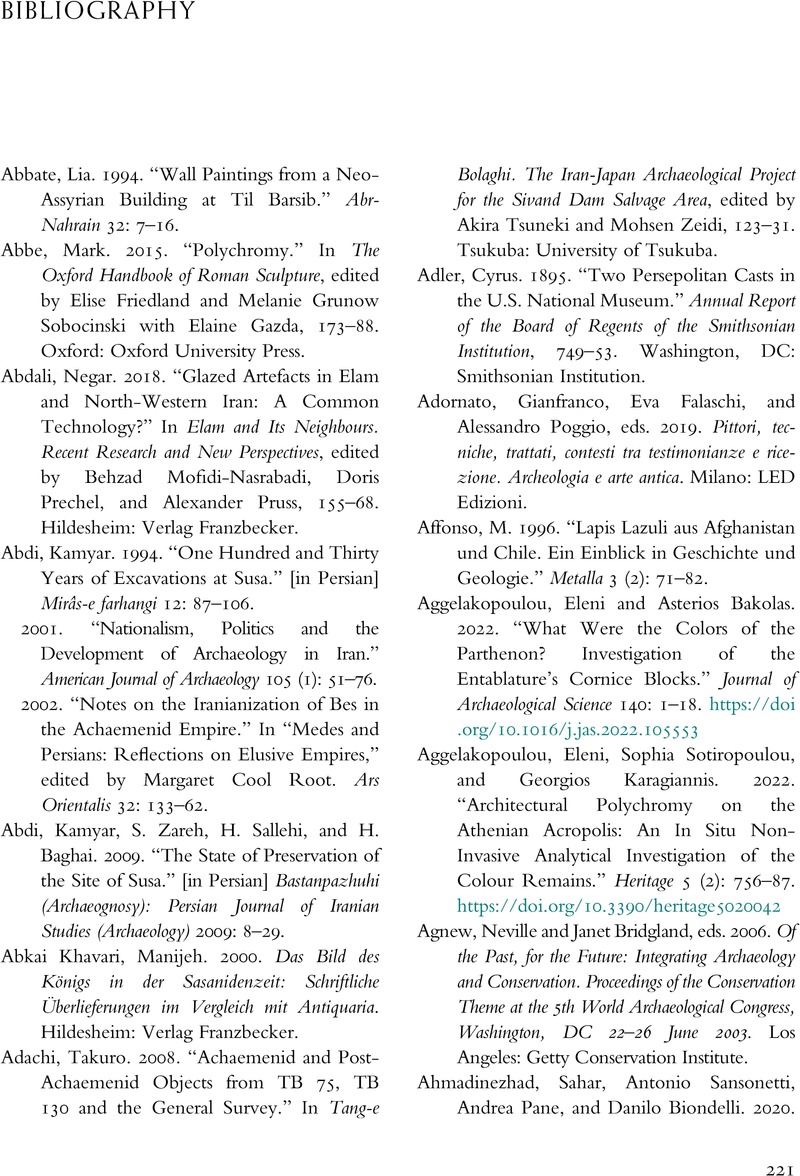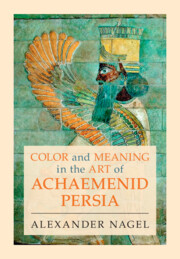Book contents
- Color and Meaning in the Art of Achaemenid Persia
- Color and Meaning in the Art of Achaemenid Persia
- Copyright page
- Contents
- Figures
- Acknowledgments
- Introduction: The Most Beautiful Blues
- Chapter One Defining Polychromies
- Chapter Two Historiographical Overview, Part I: Approaching Achaemenid Persian Polychromies in the Nineteenth Century – Ancient Literary Testimony and Modern Discourses
- Chapter Three Historiographical Overview, Part II: Approaching Achaemenid Persian Polychromies in the Twentieth Century
- Chapter Four Uncomfortable Truths: Challenges of Documenting and Preserving Achaemenid Persian Polychromies
- Chapter Five A Discussion: Aspects of Nonverbal Communication in the Achaemenid Persian Empire
- Chapter Six Concluding Contemplations
- Bibliography
- Index
- References
Bibliography
Published online by Cambridge University Press: 24 August 2023
- Color and Meaning in the Art of Achaemenid Persia
- Color and Meaning in the Art of Achaemenid Persia
- Copyright page
- Contents
- Figures
- Acknowledgments
- Introduction: The Most Beautiful Blues
- Chapter One Defining Polychromies
- Chapter Two Historiographical Overview, Part I: Approaching Achaemenid Persian Polychromies in the Nineteenth Century – Ancient Literary Testimony and Modern Discourses
- Chapter Three Historiographical Overview, Part II: Approaching Achaemenid Persian Polychromies in the Twentieth Century
- Chapter Four Uncomfortable Truths: Challenges of Documenting and Preserving Achaemenid Persian Polychromies
- Chapter Five A Discussion: Aspects of Nonverbal Communication in the Achaemenid Persian Empire
- Chapter Six Concluding Contemplations
- Bibliography
- Index
- References
Summary

- Type
- Chapter
- Information
- Color and Meaning in the Art of Achaemenid Persia , pp. 221 - 278Publisher: Cambridge University PressPrint publication year: 2023

